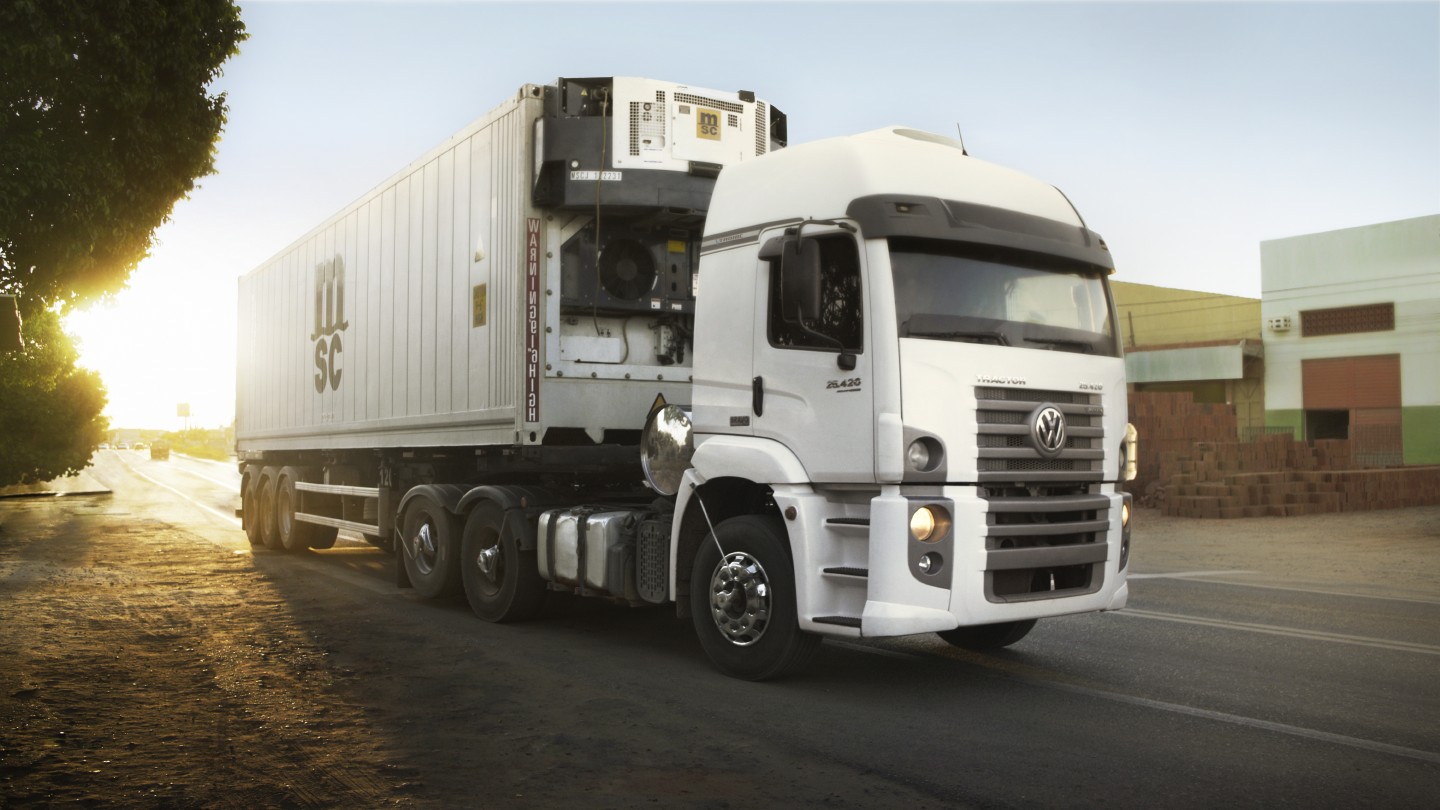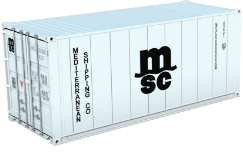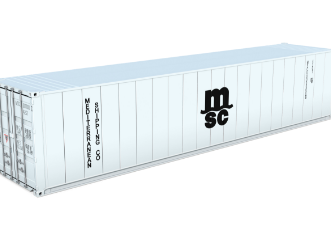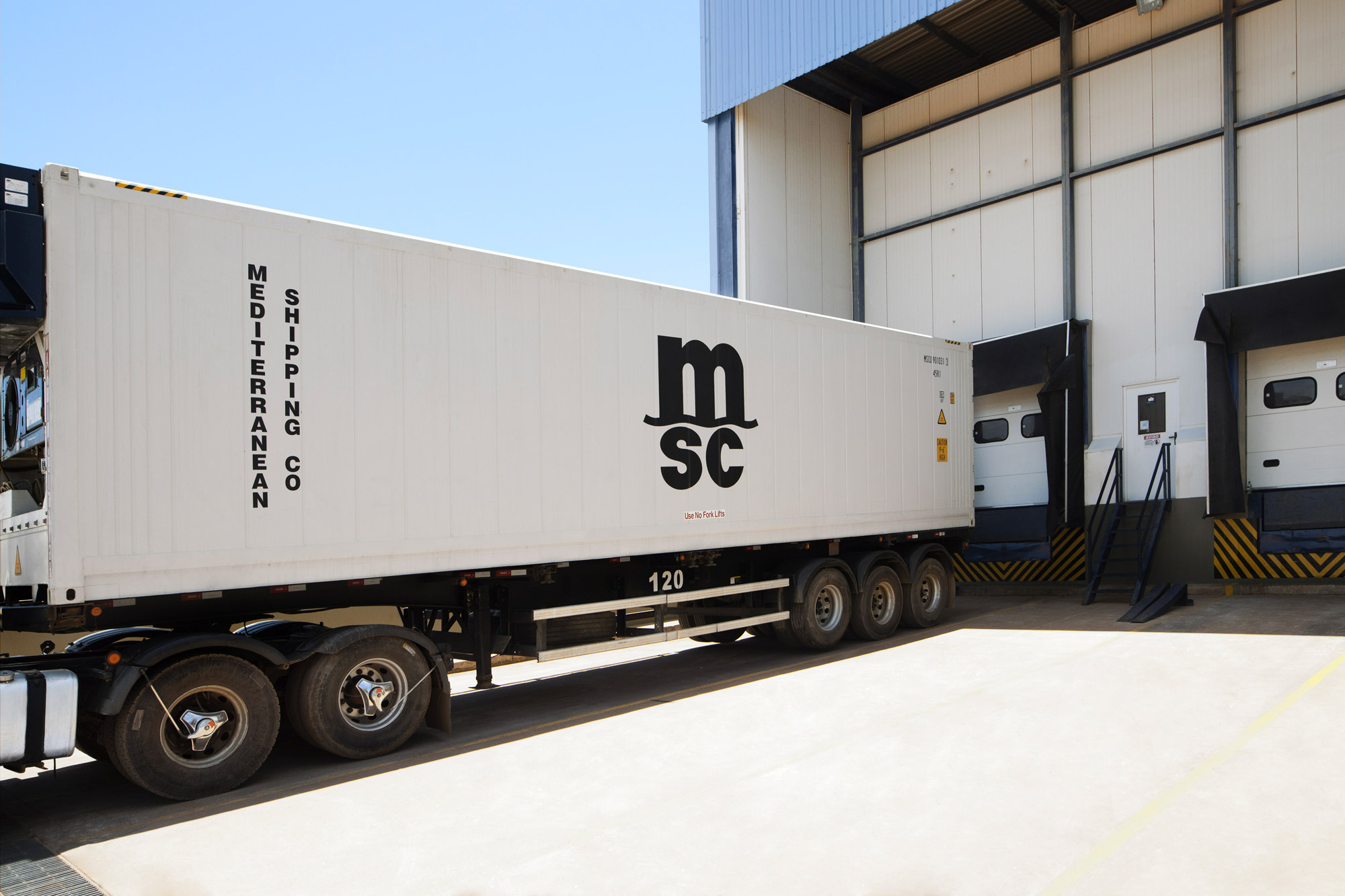
Reefer Solution
Reefer Solution


Cutting-edge Technology
Our world-leading fleet features cutting-edge cooling and dehumidification technology, including Controlled Atmosphere (CA) and vent settings to ensure airflow. We carry out a thorough pre-tip inspection (PTI), then monitor shipments regularly throughout their journey.
Did you know? MSC carried more than 1.9 million TEU of reefer cargo in 2020.

Powered by strong partnerships

Caring for people and the planet
Our Reefer Containers

Reefer steel container - 22 r1
Internal dimensions
Door
Note: Inside height is to maxi storage height.
-
Cubic Capacity
-
Maximum Payload
-
Tare Weight
-
Maximum Gross

high cube reefer steel container - 45 r1
Internal dimensions
Door
Note: Inside height is to maxi storage height.
-
Cubic Capacity
-
Maximum Payload
-
Tare Weight
-
Maximum Gross
All of our containers include
Models

NaturaLINE

PrimeLINE

Star Cool CA
Discover the ideal conditions for transporting different types of refrigerated cargo
Temperature
Chilling injury
Freeze injury
Humidity
Ventilation
Keeping your refrigerated cargo in top condition
Packing refrigerated cargo
The perfect temperature for your goods
Ahead of transportation, pre-cool your goods to achieve optimal temperature levels before loading them into a container. This will reduce the impact of outside temperatures on your valuable products while they are on the move. It's important to note that there is currently no technology available to prevent or reverse the ageing of perishable goods, but our reefer technology helps to slow down this process and maximise the shelf life of your cargo.
To learn more about the recommended conditions for specific cargo, download our reefer cargo stuffing guide.
Other useful reefer information:
Follow these simple steps to maximise the shelf life of your cargo

How to stuff your reefer container
How to stuff your reefer container

Your reefer-shipping checklist
- Load cargo up to the edge of the T-floor, to ensure an even flow of air around the container.
- When there is not enough cargo to fill the entire T-floor, we recommend using a filler or dunnage to cover the vacant area. This can also be used to cover the centre panel between pallets where there is empty space.
- As an exception, appropriately pre-cooled frozen cargo can be loaded as per the third image, but appropriate bracing would be required.
- When using palletised stowage, we recommend that the last cargo loaded into the container should be covered to encourage airflow through the cargo and prevent air from escaping through the open space around the boxes.
- Never load cargo beyond the red load line of the container or the end of the T-floor.


















